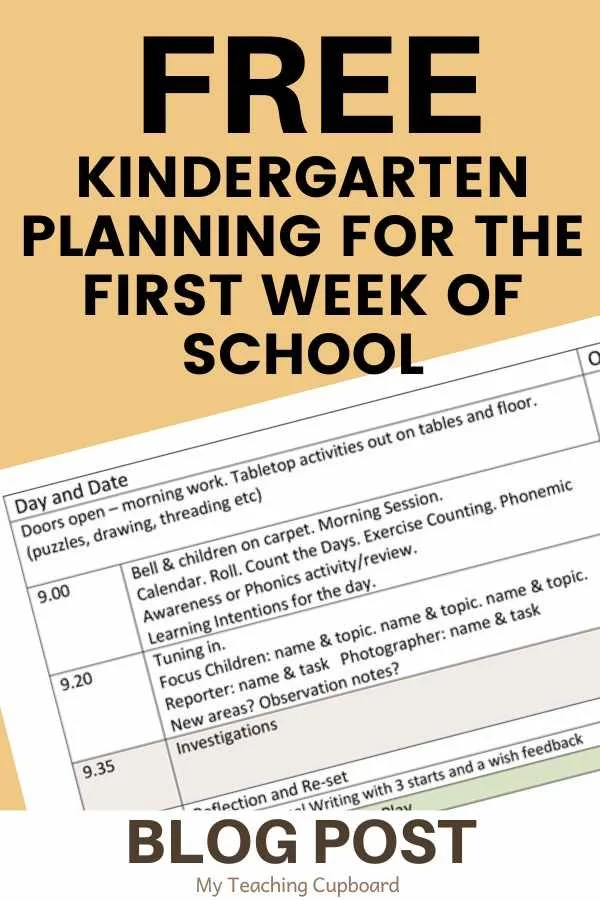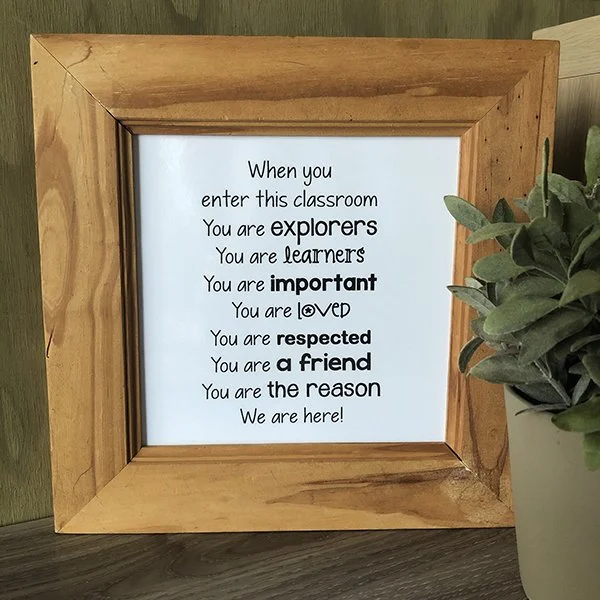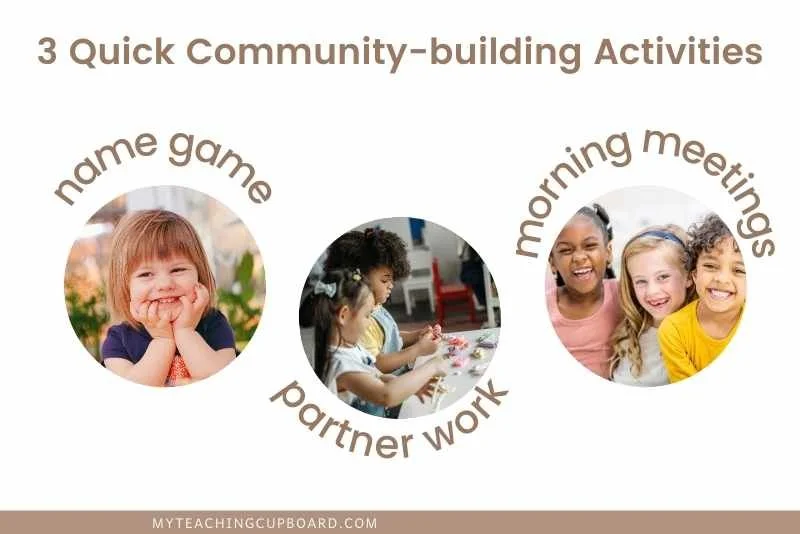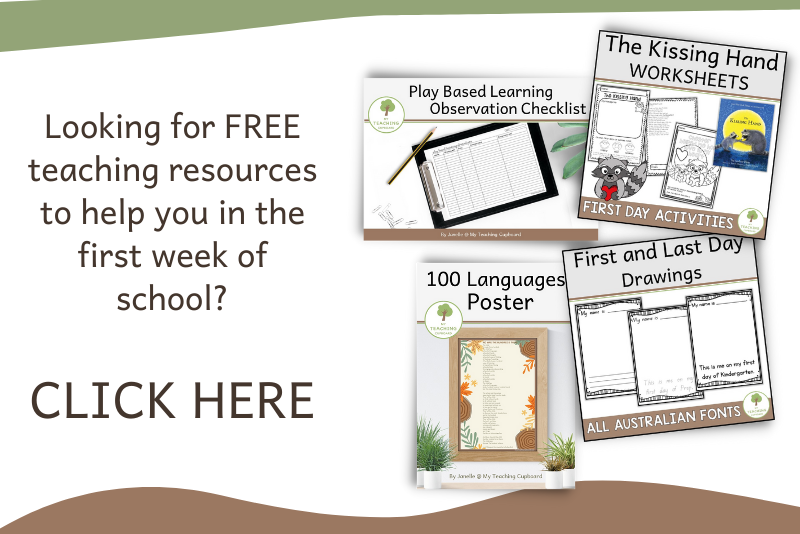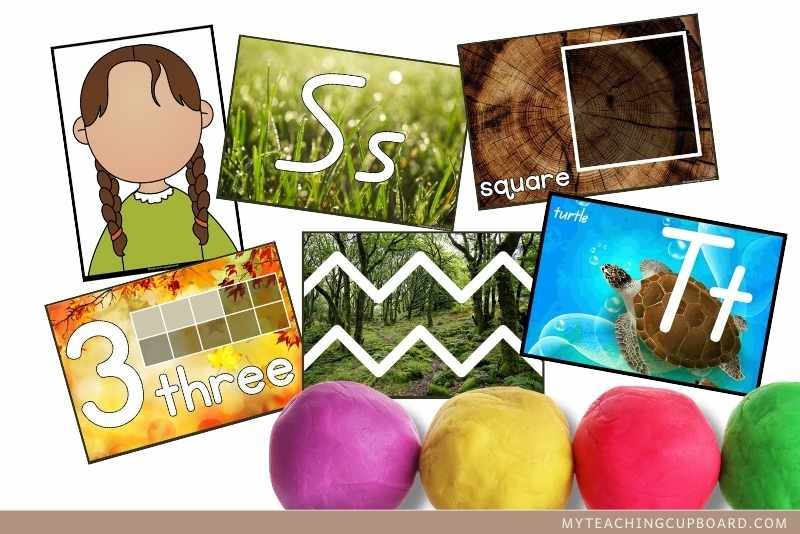Planning For the First Week of School in Kindergarten
Feeling overwhelmed planning for your first week of kindergarten? Discover my proven tips and download my real-life planning - packed with great first week activities for kindergarten. Start the Foundation Stage school year with confidence!
At the beginning of the year, when you start planning for the first week of kindergarten, there seems to be a never ending to-do list and so much to do.
It’s a mix of excitement and uncertainty that keeps most of us wide awake the night before.
As you head back to school, that first week can be quite overwhelming.
I have trouble sleeping the night before the first day. I think it is excitement and anxiety all rolled into one. You just never know what your class is going to be like.
Will the children settle quickly?
Will the parents feel reassured?
Will my plans work the way I hope they will?
These are the questions running through my head year after year—and I know I’m not alone in feeling this way. Most kindergarten teachers I know feel the same.
That first week is about so much more than ticking off curriculum boxes.
It’s about setting the tone for the entire year, building relationships, and helping our little learners (and their families) feel safe, seen, and welcomed into their new classroom - and for some, a new school.
It’s a big task, and it can feel daunting—but it doesn’t have to.
In this blog post, I’ll share my tried-and-tested strategies, tips, and real-life plans to make your first week calm, organised, and purposeful. You’ll find everything from classroom setup ideas and co-creating displays with your students, to practical routines and engaging activities for building relationships and setting expectations.
By the end of this post, you’ll have a clear plan to tackle the first week of kindergarten with confidence—and maybe even get a good night’s sleep before the first day!
How to Start Planning for Back to School in Kindergarten
I like to have everything organised and planned so that is one less thing I need to worry about.
One of my first tasks to get ready for the beginning of kindergarten is setting up the classroom. For me, keeping things minimalistic at the start of the year is a good strategy.
A calm, uncluttered classroom helps the kids feel less overwhelmed when they walk through the door for the very first time.
In fact, the classroom is bare bones:
furniture in place
basic play-based investigation areas labelled and minimal resources out
labelled boxes for student purchased school supplies around the edge of the carpet area
a list of children’s names on the door
bag racks labelled so every child has a designated space
welcome letter for parents on the door with our tea and tissues gifts close by
a basket of small soft toys next to my teacher chair
laptop and interactive panel plugged in and synced
This simple setup leaves room for the new students to add their touch to the space. It's a great way to ensure the children’s creativity can help them take ownership of the space and help them settle into their new environment.
I do not have class displays or posters up because I like to introduce them or co-create them with the children.
From years of experience, I’ve seen how much more meaningful classroom displays become when students are part of the process. Whether it’s creating an anchor chart together or decorating a bulletin board with their drawings, co-created displays foster a sense of ownership and make the classroom feel like theirs.
I have plenty of purchased and teacher-made resources stashed in the storeroom. I like to introduce them to the children and model how to use them as learning tools before putting any of them up in the classroom.
Co-create Classroom Displays for Your Classroom
Whenever possible, I like to co-create displays and posters with the children. This way, they become useful resources that the children see as purposeful and feel some ownership with.
When students actively contribute to the classroom environment, it fosters a sense of pride and belonging. Displays go from being “just decorations” to meaningful tools that help students feel connected to their space.
The children are much more likely to refer to and use anchor charts and learning displays if they understand the purpose of these learning tools and have been taught how to use them.
Here are some examples:
when we create a class rules poster together, it goes from a teacher directed set of classroom rules to a shared agreement
collaborative art projects for bulletin boards can reflect their favourite things or interests
This approach ties beautifully into the Reggio Emilia philosophy, which views the classroom environment as the third teacher and recognises children as capable, competent individuals. Co-created displays highlight this perspective by inviting children to leave their mark on their environment.
As I lay awake the night before the first day of kindergarten, trying to sleep, I find myself mentally running through my plans for the following day.
Even though I know I am prepared with plenty of fun and engaging activities to do, I know that first week is not about covering the curriculum.
Instead, it’s about setting the foundation for relationships, routines, and meaningful learning experiences—and co-creating displays is one of the best ways to start.
How to Build Relationships and Set Expectations
The most important thing in the first weeks of school is relationships!
Make it all about building relationships with each, and every child. In fact, I believe relationship building and connection is important ALL year - not just during the first couple of weeks.
But particularly at the start of any new school year, I focus my full attention on getting to know each little individual. I let them know that I see them and that I will look after them.
This connection lays the foundation for trust, and trust is what helps children feel safe in their new environment. It's the perfect way to build our classroom community right from day one.
That first week is also about setting expectations around behaviour both inside and outside the classroom.
Everything is new and everything – everything!! needs to be modelled, discussed, and practised. Whether it’s learning how to line up quietly, managing transitions, or using classroom materials respectfully, each behaviour is taught step-by-step. I take my time with these lessons because I know they will shape the way our classroom runs for the rest of the year.
The children will be feeling overwhelmed and anxious as well, so I explicitly teach every single behaviour and expectation. I do not rush these important lessons and we will repeat them and practise them slowly and carefully for many days to come.
Here are some of my favourite strategies for building relationships and setting expectations with kindergarten students:
Icebreaker Activities: Start with simple games or activities that encourage students to share something about themselves. For example, a "getting to know you" circle time activity can be a fun way for each child to introduce themselves. At carpet time, we go around the circle with each of our new friends saying their name and their favourite colour.
Modelling Routines: Establish predictable routines early on. I love using morning meetings to greet the class, review the day ahead, and build a sense of community. Transition times also deserve careful attention—demonstrating and practising even small routines, like how to pack up, can make a big difference.
Visual Supports for Expectations: Illustrated WALT (We Are Learning To) goals are a fantastic way to visually communicate behaviour and curriculum learning expectations to young children.
For example, instead of saying “sit quietly,” I might show an illustrated goal with a picture of children listening.
These strategies help children feel supported and secure in their new environment. As Maria Montessori said, “Children thrive in an environment where they feel secure and supported.”
Building that security starts with relationships and routines.
If you’d like more ideas on how to create this kind of environment, check out my blog posts:
How to Start with Play-Based Learning
How to Build a Classroom Community
Sure academics are important but this first week is more about helping your students feel like they belong and giving them the tools to succeed in their new space.
Take the time to lay this foundation.
Take as much time as your students need and you’ll see the benefits ripple through the rest of the year.
Build a Classroom Community
These first few weeks are when the tone for the rest of the year is set. There will not be a focus on curriculum learning intentions just yet.
Instead, my focus is on:
building relationships
developing social skills
fostering a strong classroom community
and establishing clear behaviour expectations and classroom routines.
These foundational elements underpin every single planned activity and interaction in the classroom.
Creating a classroom community is about helping children feel safe, supported, and connected.
At the beginning of the school year, activities like name games, partner work, and morning greetings are simple but effective ways to help children form bonds and feel a sense of belonging.
For example, a name game where students share their name and a favourite pastime or their favourite colour not only breaks the ice but also gives me a glimpse into their interests.
Partner work for small tasks builds teamwork in manageable steps, while daily morning greetings ensure that each child starts the day feeling seen and welcomed.
If you are interested in learning more about building a classroom community and some other classroom management tips, you might like to read this blog post: How to Build a Classroom Community
My planning may not reflect this focus but relationship building and behaviour expectations will underpin every single planned activity so please keep this in mind when you look over my planning.
I know I have over planned my first week of school activities and there is no way we will cover everything, but I do like to have extra activities ready as a backup.
I do not expect to even cover half of my first week of kindergarten lesson plans, so please don’t feel inadequate if you reach the end of the day with lessons incomplete or not even started.
Remember, flexibility is key!
You can always modify activities and swap lessons around to suit your particular cohort.
These first few weeks are about finding what works best for you and your students and building the strong foundation that will carry you all through the year.
PREP or Kindergarten Planning for the First Week of School
I usually print my planning as a weekly timetable, but I have found in Prep or kindergarten, especially in the first week, daily planning works best.
I have each day pre-planned but I only print the first day on a single sheet.
This single-sheet plan is my go-to throughout the day—it’s clipped to a clipboard and easy to reference. I write a lot of observational notes about lessons and children on this printed daily plan too.
At the end of the first exhausting day, I refer to my notes to inform the next day’s planning.
This flexibility is key in those early days when you’re still getting to know your students and their needs. I can slot in lessons not taught the first day, take out or modify activities that may be too challenging or too easy, or add lessons that I noticed would be a priority for this particular cohort.
To help make your first week smoother, you can download my Prep Planning for the First Week document.
It’s packed with practical ideas and ready-to-use lessons tailored for Prep/Foundation Stage and kindergarten classrooms.
You'll find good ideas for
read alouds
brain breaks
daily activities for independent work
small group activities
lessons for the entire class
and heaps of opportunities for plenty of practice of important skills.
You might even see how we fit in some free play 😉
Oh and there are also links to lots of free printables and resources like my tea and tissues parent gift printables and kissing hand resources.
If you are interested in 1st grade planning, I also have my grade one planning for the first week of school HERE. You'll also want to check out my blog post: Planning for the First week of Grade One
Tips for Documenting and Reflecting
Flexibility and reflection are essential.
Here are a few simple strategies I use to stay organised while adapting my plans:
Use a clipboard for plans and notes: Having a hard copy of your plans with space for notes makes it easy to jot down observations in the moment.
Reflect at the end of each day: Take time to review your notes and adjust your plans for the next day based on what worked, what didn’t, and what your students need.
Update digital plans regularly: Modifying digital plans saves time and helps you keep track of changes. Reprinting a revised version ensures you’re ready for the next day.
These small but powerful strategies help me stay flexible, organised, and responsive to my students’ needs. By the end of the first week, I have a clearer picture of my class and a solid foundation to build on for the rest of the term.
My Digital Planning Documents
My planning documents contain links to free printable resources, some store products and educational video clips I use in the classroom. They are designed to save you time and provide you with practical, ready-to-use ideas for the first week of kindergarten.
Remember to save the digital planning to your computer so you can access these valuable resources whenever you need them.
I love looking at other teacher’s planning and so I thought you might too.
There’s something reassuring about seeing how someone else structures their week—it sparks ideas and helps you feel less alone in the planning process.
The planning documents I am sharing with you here are my real life first week plans and suit my teaching style and my philosophy.
Please don’t feel they are all must-do lessons. They’re not designed to be followed step-by-step. Instead, think of them as a flexible framework you can adapt to your teaching style, your school’s needs, and your curriculum.
Take what works for you, leave what doesn’t, and feel free to make it your own.
If you are interested in my planning process, you might be interested in a couple of other blog posts I have:
Weekly Timetable for My Play-based Classroom
5 Tips for a Great First Day of School
The first day of school in kindergarten sets the tone for the rest of the year, so it’s important to approach it with intention, warmth, and flexibility.
Here are my five tips to help you create a positive and memorable first day for your students, their families, and yourself.
1. Greet Students and Parents Warmly
A warm, friendly welcome can go a long way in easing those first-day jitters for both children and their parents. I like to stand at the door, greeting each family with a smile and reassuring words.
Offering a small gesture, like my tea and tissues gift for parents, is a lovely way to show that you care about their transition too.
2. Begin with a Calming Activity
Start the day with some simple morning tubs or hands-on table-top activities to help children settle in and feel comfortable.
Loose parts play is a fun activity that works beautifully for this because it's calming, open-ended, and allows for creativity - plus it is one of my favourite fine motor activities.
Another one of our favourite things is playdough. My playdough mats are a helpful resource designed to encourage fine motor skills while also providing a gentle introduction to classroom routines at arrival time.
These kinds of activities help children focus and feel at ease as they explore their new space.
3. Focus on Relationship-Building Over Academics
The first day is all about connection.
Spend time getting to know your students through name games, pair activities, or circle time discussions.
Use this time to listen, observe, and start building those important relationships that will shape the classroom dynamic. The academics can wait—building trust and community will make everything else smoother down the line.
4. Keep Instructions Simple and Repeat Key Routines
New environments can be overwhelming for little learners, so keeping instructions clear and concise is essential. Demonstrate and practice key routines—like lining up, transitioning between activities, and tidying up—several times throughout the day.
Repetition helps children feel confident and secure in their new surroundings.
5. Reflect and Adjust Plans After the First Day
The first day is always unpredictable, no matter how well you’ve planned.
At the end of the day, take a moment to reflect on what worked, what didn’t, and what adjustments need to be made for the rest of the week. Flexibility is key in these early days—your plans should adapt to meet the needs of your cohort as you learn more about them.
Want more ideas to help make your first day and week a success? Check out these resources, like my playdough resources and investigation prompts, to get started with engaging, play-based activities right from the first week.
Plan, Adapt, and Thrive!
The first week of kindergarten is an exciting and sometimes overwhelming time, but with the right preparation and mindset, it can also be incredibly rewarding.
Taking the time to co-create displays with your students, build strong relationships, and set clear expectations lays the foundation for a year of growth, connection, and success.
Flexibility and reflection are just as important as planning.
While it’s tempting to stick to a detailed schedule, adapting to your students’ unique needs and interests will always lead to better outcomes. Remember, it’s not about getting everything perfect—it’s about creating a classroom environment where children feel safe, seen, and ready to learn.
Download my free planning resources and get access to my real-life, tried-and-tested plans that will help you start the year with confidence. These documents will not only save you time but also provide inspiration and structure for your first week.
and subscribe to my newsletter for even more tips and tools to support you throughout the year.
Now that you’ve got strategies and ideas for the first week, it’s time to put them into action.
Here’s to a calm, organised, and joyful first week—because you’ve got this!
If you liked this blog post on Planning For the First Week of Kindergarten, please consider sharing it…
Just CLICK the sharing box below.👇

